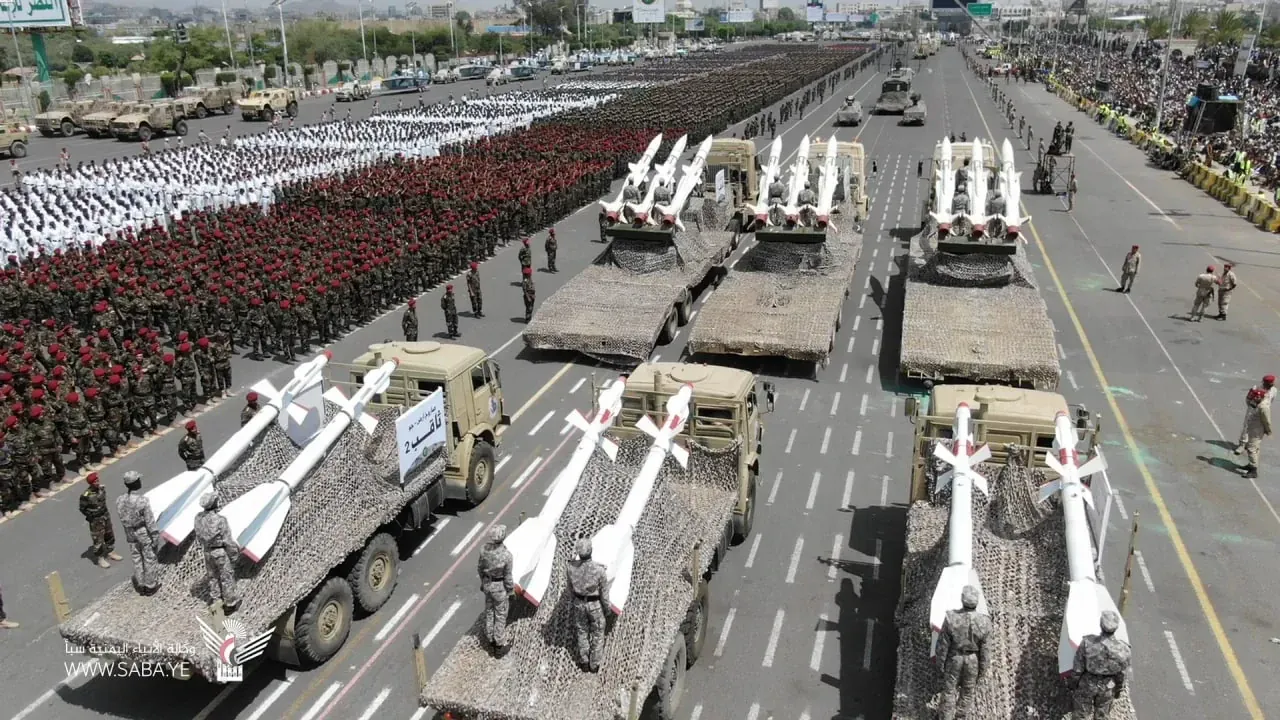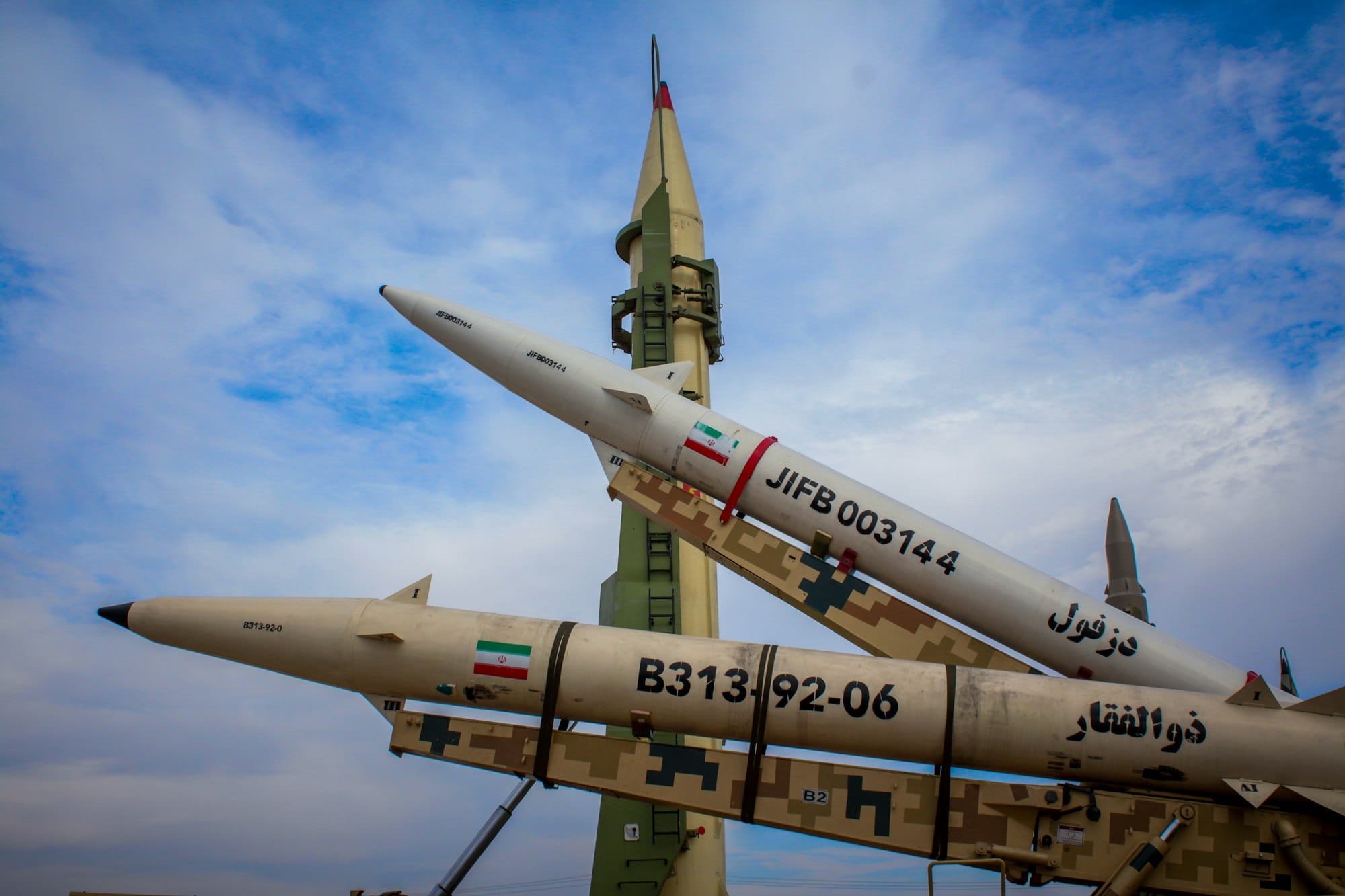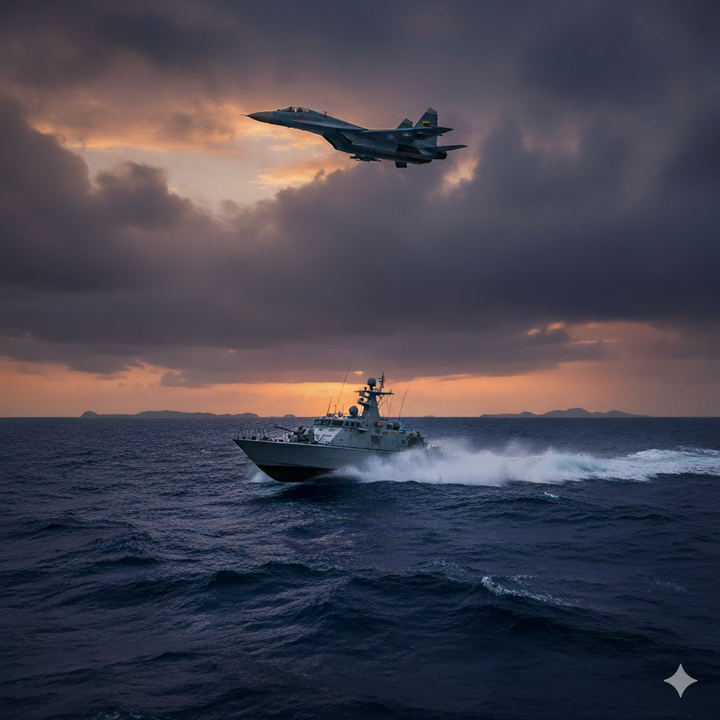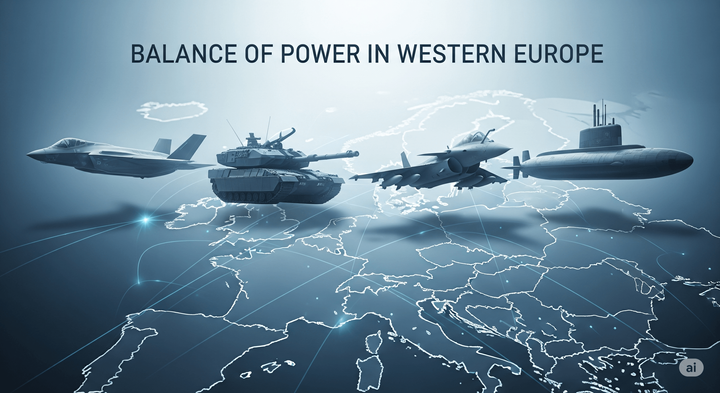How Yemen defeated the United States Navy

This article will dissect how Yemen’s Houthi movement outmaneuvered the U.S. Navy, transforming a lopsided military imbalance into a strategic victory. From the dynamics of missile warfare to the political costs of endless engagement, the conflict in Yemen offers a case study in how determined irregular forces can defy even the most advanced military apparatus.
Introduction
On May 6, 2025, U.S. President Donald Trump stood in the Oval Office and declared an end to Operation Rough Rider, a two-month bombing campaign targeting Yemen’s Houthi government. Framing the decision as a triumph, Trump asserted that the Houthis had “capitulated,” agreeing to cease attacks on American warships in exchange for a halt to U.S. airstrikes. But behind this carefully crafted narrative lies a stark reality: the U.S. Navy, despite its overwhelming technological and financial superiority, failed to neutralize a much weaker Yemen, armed with drones, missiles, and asymmetric tactics. Far from a victory, the cessation of hostilities underscores a strategic capitulation by the world’s most powerful military force—a capitulation cloaked in diplomatic spin.
The Houthi response to Trump’s announcement tells a different story. Salim Al-Moghales, a senior Houthi politburo member, dismissed the claim of surrender, emphasizing that their campaign against Israel would persist “until the aggression against Gaza stops”. Mohammed Ali al-Houthi, a key leader, framed the U.S. withdrawal as a defeat for Israeli Prime Minister Benjamin Netanyahu and a “victory” for Yemeni resistance. These statements reveal a critical truth: the Houthis never conceded defeat. Instead, they leveraged their ability to inflict costs—both material and political—on the U.S. and its allies, forcing Washington to abandon its maximalist objectives.
The numbers speak volumes. Over 45 days, the U.S. military launched over 1,000 strikes, deploying advanced aircraft carriers like the USS Harry S. Truman and USS Carl Vinson, B-52 bombers, and Tomahawk missiles. Yet the Houthis remained undeterred, retaliating with ballistic missiles, drones, and even audacious (if largely symbolic) claims of targeting U.S. carriers. The Pentagon lost six MQ-9 Reaper drones, at least two F/A-18 Super Hornets—one accidentally toppled overboard during evasive maneuvers—and burned through $3 billion in three weeks. Meanwhile, Houthi attacks on Red Sea shipping, though reduced, continued to disrupt global trade, demonstrating their capacity to sustain a war of attrition.
Trump’s ceasefire, brokered by Oman, was less a diplomatic masterstroke than an admission of exhaustion. The Houthis agreed only to halt attacks on U.S. vessels, reserving the right to strike Israeli-linked ships and cities—a concession that preserved their core objective of pressuring Israel. For the U.S., the campaign exposed the limits of naval power against a decentralized, ideologically driven adversary.
Conflict Background

The roots of Yemen’s modern conflict trace back to long-standing political, economic, and sectarian tensions, but the current phase—marked by the Houthi movement’s rise to power—escalated dramatically after 2001. The conflict centers on governance, regional influence, and the marginalization of Yemen’s Zaydi Shia minority, who make up roughly 40-45% of the population.
Early Catalysts (2001–2011)
In the early 2000s, Yemen’s authoritarian president, Ali Abdullah Saleh, aligned closely with the U.S. and Saudi Arabia in the "War on Terror," targeting groups like Al-Qaeda in the Arabian Peninsula (AQAP). This alliance alienated northern Zaydi communities, who viewed Saleh as prioritizing foreign interests over domestic equity. The Houthi movement, formally known as Ansar Allah, emerged in the 1990s as a Zaydi revivalist group opposing Saleh’s corruption and Saudi-backed Sunni dominance. Their grievances crystallized in 2004 when Saleh ordered the arrest of their leader, Hussein al-Houthi, sparking a rebellion. Hussein was killed later that year, but his brother Abdul-Malik al-Houthi continued the insurgency, framing it as resistance to oppression and foreign interference.
Over six subsequent rebellions (2004–2010), the Houthis clashed with Saleh’s forces and Saudi-backed militias, leveraging guerrilla tactics and mountainous terrain. Saleh’s brutal counterinsurgency campaigns, including Operation Scorched Earth (2009), deepened grievances and solidified Houthi resolve.
Arab Spring and Political Fracturing (2011–2014)
The 2011 Arab Spring uprisings toppled Saleh, but his successor, Abdrabbuh Mansour Hadi, inherited a fractured state. The Houthis joined protests against Hadi’s transitional government, accusing it of perpetuating corruption and sidelining Zaydis in favor of Sunni elites and Saudi-aligned factions. By 2014, Hadi’s decision to slash fuel subsidies—a condition for IMF loans—ignited nationwide protests. The Houthis seized this moment, allying with Saleh (their former adversary) and his loyalists to orchestrate a takeover of Sanaa in September 2014.
Houthi Consolidation of Power (2014–2015)
The Houthi-Saleh alliance swiftly captured key institutions, forcing Hadi to resign and flee to Saudi Arabia in 2015. The group justified their coup as a "revolution against corruption" and a defense of Yemeni sovereignty. Their control over northern Yemen, including Sanaa and the Red Sea coast, was bolstered by Iranian support, including arms and training, though Tehran denies direct command.
Saudi Arabia, fearing Iranian encroachment, launched a military coalition in March 2015 to restore Hadi’s government. However, the Houthis’ decentralized structure, knowledge of local terrain, and access to Iranian-supplied drones and missiles allowed them to withstand airstrikes and blockade tactics. By 2022, despite international isolation, the Houthis governed 70–80% of Yemen’s population, collecting taxes, printing currency, and maintaining a parallel administration.
Recent Escalation Timeline

The Houthi movement’s escalation in the Red Sea began in October 2023, shortly after Israel’s military incursion into Gaza following Hamas’ October 7 attacks. Positioning themselves as defenders of Palestinian rights, the Houthis announced a naval blockade targeting Israeli-linked commercial vessels transiting the Red Sea and Bab al-Mandab Strait. Using drones, missiles, and speedboats, they attacked over 190 ships by March 2025, sinking two vessels, seizing another, and killing at least four crew members. Their stated goal was to pressure Israel to lift its blockade on Gaza and allow humanitarian aid into the enclave.
The blockade had immediate economic repercussions: 15% of global seaborne trade was disrupted as major shipping companies rerouted around Africa, increasing costs and transit times. The Houthis also launched ballistic missiles at Israeli cities, including Tel Aviv and Eilat. In response, the U.S. and UK initiated Operation Prosperity Guardian in December 2023, a multinational naval coalition to protect shipping, followed by Operation Poseidon Archer in January 2024, which conducted targeted strikes on Houthi missile and drone sites. Despite these efforts, Houthi attacks persisted, underscoring their ability to adapt and replenish weapons.
Trump’s Escalation: Operation Rough Rider (March–May 2025)
Upon taking office in January 2025, President Donald Trump adopted a more aggressive posture, redesignating the Houthis as a Foreign Terrorist Organization and authorizing Operation Rough Rider, the largest U.S. military campaign in the region during his second term. Beginning on March 15, the operation involved over 1,000 strikes targeting Houthi missile launchers, air defenses, port facilities, and leadership. The USS Harry S. Truman and Carl Vinson carrier strike groups led the assault, supported by B-52 bombers and Reaper drones.
The campaign inflicted significant casualties—killing more than a hundred Houthi fighters and scores of civilians—but failed to cripple the group’s operational capacity. Houthi leaders, leveraging Iranian-supplied technology and decentralized tactics, retaliated by downing U.S. drones (including 18 MQ-9 Reapers) and striking Israeli infrastructure, such as a ballistic missile attack near Tel Aviv’s Ben Gurion Airport on May 5. Meanwhile, the financial toll on the U.S. mounted, with Operation Rough Rider costing $3 billion in three weeks and straining military resources.
Ceasefire (May 2025)
On May 6, Trump announced a unilateral ceasefire brokered by Oman, declaring the Houthis had “capitulated” after agreeing to halt attacks on U.S. vessels. However, Houthi leaders clarified that the truce excluded Israel, vowing to continue strikes until Gaza’s siege ended. The agreement exposed tensions with Israel, as Netanyahu’s government criticized the U.S. for leaving it vulnerable to ongoing Houthi missile barrages.
Forces & Means

The Houthis rely heavily on asymmetric warfare, leveraging Iranian-supplied and domestically modified systems. Their arsenal includes advanced ballistic missiles (e.g., Palestine-2 hypersonic missiles) and drones, which they use to target commercial shipping in the Red Sea, Israeli cities, and U.S. military assets. They employ layered air defenses like the Barq SAMs and the 358 loitering missile, which have downed multiple U.S. drones. Smuggling networks via Oman and Iran provide critical components, such as Chinese hydrogen fuel cells and drone parts, enabling localized production. The group also uses naval drones and anti-ship missiles to disrupt maritime trade, framing these attacks as solidarity with Gaza.
The United States employs overwhelming conventional superiority, including carrier strike groups, stealth bombers, and precision-guided munitions. Operation Rough Rider targeted Houthi air defenses, missile depots, and UAV facilities with B-2 bombers and F/A-18s. However, the Houthis’ decentralized infrastructure (e.g., underground tunnels) and Iran’s support have complicated U.S. efforts to fully degrade their capabilities. The U.S. also faces operational challenges, such as the loss of MQ-9 drones to Houthi SAMs and accusations of civilian casualties in strikes on ports like Ras Isa.
Combat Dynamics & Attrition Rates
The combat dynamics between the U.S. Navy and Houthi anti-ship missiles and drones reveal a stark asymmetry that fundamentally disadvantages the defender. The Houthis employ low-cost, Iranian-supplied or domestically modified weapons, such as C-802 anti-ship cruise missiles (range: 120–180 km) and Samad/Wa’id drones (costing as little as 2,000–2,000–20,000 per unit), which they launch in swarms to overwhelm defenses. By contrast, the U.S. relies on high-end interceptors like SM-2 missiles (2.1 million per shot) and SM−6missiles (2.1 million pers hot) and SM−6missiles (4.3 million each) to neutralize these threats, often expending two or more missiles per incoming target to ensure a high probability of kill. This creates a 1000:1 cost ratio in the Houthis’ favor, enabling them to sustain attacks even with modest resources while draining U.S. stockpiles.
Compounding this imbalance is the finite capacity of Vertical Launch System (VLS) cells on U.S. destroyers and cruisers. Each ship carries 90–96 VLS cells, which cannot be reloaded at sea and require time-consuming port visits with specialized cranes. For example, the USS Carney fired 71 missiles during a single deployment, leaving it reliant on 5-inch guns for close-range threats—a lower-cost but riskier alternative. With the Navy expending 400+ munitions in 15 months (including 120 SM-2s and 80 SM-6s), the strain on readiness is acute, especially given concerns about depleted stocks for a potential Pacific conflict with China. Meanwhile, the Houthis’ decentralized production and Iranian resupply networks allow them to regenerate capabilities faster than the U.S. can intercept, exploiting the defender’s logistical and economic vulnerabilities. This attritional reality forces the U.S. into a cost-prohibitive cycle, where even perfect interception rates cede strategic advantage to an adversary with cheaper, simpler systems.
Conclusion
The conflict in Yemen has exposed a sobering truth for the United States and modern military strategists: despite its vast defense budget, America no longer holds decisive technological or fore power advantages in war. The proliferation of cheap drones, hypersonic missiles, and asymmetric tactics has rendered traditional military supremacy obsolete—proving that even a superpower can be outgunned by a determined, resourceful adversary.
Yemen’s defiance was not merely military but strategic. By sustaining a war of attrition, the Houthis forced Washington into costly engagements—one where every million-dollar interceptor missile expended against a $20,000 drone became a symbolic defeat. The U.S. Navy, constrained by finite resources and the looming specter of great-power competition, could not afford an endless engagement. Meanwhile, the Houthis’ ability to continue striking Israeli-linked targets, even after the ceasefire, demonstrated that their core objectives remained intact.
This conflict serves as a case study for the future of warfare, where decentralized, ideologically motivated forces can leverage cheap, proliferated technology to impose disproportionate costs on conventional militaries. For the U.S., the lesson is clear: dominance of conventional forces does not equate to strategic success. The methods of asymmetric resistance have evolved, and cheap drones and missiles have irrevocably changed the strategic calculus.





Comments ()